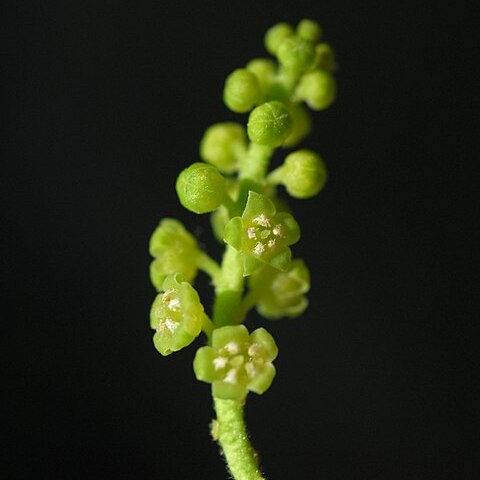Shrubs or small trees deciduous. Branches many, terete. Winter buds large, grayish white sericeous. Leaves alternate, petiolate, thickly elliptic to ovate-oblong, membranous or stiffly papery, pinnately veined, lateral veins conspicuous, reaching to near apex, margin entire. Inflorescences often terminal on leafy axillary shoots, racemelike or thyrsoid with umbellate proximal branches, spicate, or cymose; female ones with flowers subtended by well-developed leaves, effectively axillary and solitary; bisexual flowers usually at apex of inflorescences, rarely 1-flowered, bracteate. Flowers paired or solitary, bisexual or unisexual (plants hermaphroditic or polygamous); perianth tube turbinate (very short in male flowers), lobes 5(or 6), patent, abaxially pilose, adaxially sparsely hairy behind stamens. Stamens 5; filaments very short; anthers ovate, cells parallel, dehiscence longitudinal. Disk slightly raised, flat, circular, usually lobed, lobes scale-like. Ovary inferior; ovules 2 or 3. Style tubular; stigma small, capitate, inconspicuously lobed. Fruit a rather large drupe, base rounded, apex truncate to slightly depressed, with conspicuous, relatively broad persistent perianth lobes and broad apical disk (more than 5 mm wide), exocarp thickly fleshy, endocarp bony. Seeds globose or subglobose; embryo surrounding apex.
More
Subdioecious; staminate fls with short, broadly obconic hypanthium; tep usually 5; disk prolonged into as many short, glandular lobes, bearing stamens in the sinuses, the pistil infertile; fertile fls with longer hypanthium and smaller anthers on shorter filaments, the style short and stout, the stigma capitate; fr a pyriform to subglobose drupe; trees or shrubs with thin, alternate lvs and small greenish fls in peduncled terminal racemes; 2n=38. 4, the others in e. Asia.

